#351 - Difficult Number Series
Find the next number in the series ?
1 10 24 43 67 ?
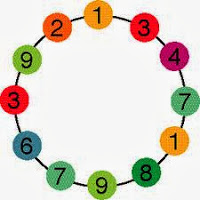
96
Difference between two numbers are
9,14,19,24,29.
Difference between every consecutive number is 5.
So next number is 67+29=96
Find the next number in the series ?
1 10 24 43 67 ?

96
Difference between two numbers are
9,14,19,24,29.
Difference between every consecutive number is 5.
So next number is 67+29=96
A research team went to a village somewhere between the jungles of Africa. Luckily for them, they reached on the day when quite an interesting custom was to be performed. The custom was performed once in a year as they confirmed and was performed in order to collect the taxes from every male of the region.
The taxes were to be paid in the form of grains. Everyone must pay pounds of grain equaling his respective age. Which means a 20 year old will have to pay 20 pounds of grains and a 30 years old will pay 30 pounds of grain and so on.
The chief who collects the tax have 7 weights and a large 2 pan scale to weigh. But there is another custom that the chief can weigh only with three of the seven weights.
Can you find out the weights of the seven weights? Also what is the maximum age of the man that can be weighed for the payment of taxes ?
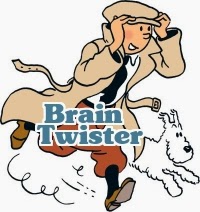
There is a thing which you must keep in mind. The chief can put weights on both the pans.
Keeping that in mind
The weights 1, 3, 7, 12, 43, 76, 102
The oldest age that can be measured with these weights is 122
There are 100 bulbs in a room. 100 strangers have been accumulated in the adjacent room. The first one goes and lights up every bulb. The second one goes and switches off all the even numbered bulbs - second, fourth, sixth... and so on. The third one goes and reverses the current position of every third bulb (third, sixth, ninth… and so on.) i.e. if the bulb is lit, he switches it off and if the bulb is off, he switches it on. All the 100 strangers progresses in the similar fashion.
After the last person has done what he wanted, which bulbs will be lit and which ones will be switched off ?

Ponder over the bulb number 56, people will visit it for every divisor it has. So 56 has 1 & 56, 2 & 28, 4 & 14, 7 & 8. So on pass 1, the 1st person will light the bulb; pass 2, 2nd one will switch it off; pass 4, light it; pass 7, switch it off; pass 8, light it; pass 14, switch it off; pass 28, light it; pass 56, switch it off.
For each pair of divisors the bulb will just end up back in its preliminary state. But there are cases in which the pair of divisor has similar number for example bulb number 16. 16 has the divisors 1 & 16, 2 & 8, 4&4. But 4 is recurring because 16 is a perfect square, so you will only visit bulb number 16, on pass 1, 2, 4, 8 and 16… leaving it lit at the end. So only perfect square bulbs will be lit at the end.
Vin Diesel is pulling a theft and has planned to run away with all the cash kept in the safe. But the only way to open the safe is the 13 character password. He has a set of five clues given to him by a trustworthy source.
Exactly two of the below statements are false.
The password is contained within this sentence.
The password is not in this hint.
The password is within only one of these statements.
At least one of the above statement is a lie.

The Password, Clues 2 and 5 are correct and rest are lies.
It's time for a mind boggling puzzle.Analyze the statements below and find out who did it.
Please note that three of the statements below are false.
1. Mr. Reese: 'Mr. Bilbo did it.'
2. Mr. Bilbo: 'Mr. Reese did it.'
3. Mr. Gerry: 'Mr. Bilbo’s telling the truth.'
4. Mr. Yang: 'Mr. Gerry’s not lying.'

Mr. Bilbo did it.
Let us consider all the statements one by one for every person and find out.
Case 1: Mr. Bilbo did it, then
Statement 1 => true
Statement 2 => false (as Reese did not do it)
Statement 3 => false (as Mr. Bilbo is lying)
Statement 4 => false (as Mr. Gerry is lying)
It was Mr. Bilbo who did it. But let us confirm by taking up other cases as well.
Case 2: Mr. Reese did it, then
Statement 1 => false (as Mr. Bilbo did not do it)
Statement 2 => true
Statement 3 => true (as Mr. Bilbo is not lying)
Two statements are true whereas only one should be true, thus Mr. Reese did not do it.
Case 3: Mr. Gerry did it, then
Statement 1 => false (as Mr. Bilbo did not do it)
Statement 2 => false (as Mr. Reese did not do it)
Statement 3 => false (as Mr. Bilbo is lying)
Statement 4 => false (as Mr. Gerry is lying)
All four statements stand false, thus Mr. Gerry did not do it.
Case 4: Mr. Yang did it, then
Statement 1 => false (as Mr. Bilbo did not do it)
Statement 2 => false (as Mr. Reese did not do it)
Statement 3 => false (as Mr. Bilbo is lying)
Statement 4 => false (as Mr. Gerry is lying)
All four statements are false therefore Mr. Yang did not do it.
We have verified with everyone and now know that it was Mr. Bilbo who did it.
We have arranged an array of numbers below. What you have to do is use any kind of mathematical symbol you know excluding any symbol that contains a number like cube root. You can use any amount of symbols but you have to come up with a valid equation for all of them.
0 0 0 = 6
1 1 1 = 6
2 + 2 + 2 = 6
3 3 3 = 6
4 4 4 = 6
5 5 5 = 6
6 6 6 = 6
7 7 7 = 6
8 8 8 = 6
9 9 9 = 6
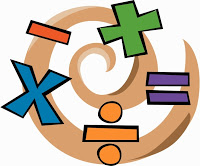
(0! + 0! + 0!)! = 6
(1 + 1 + 1)! = 6
2 + 2 + 2 = 6
3 x 3 - 3 = 6
√4 + √4 + √4 = 6
5 + 5/5 = 6
6 + 6 - 6 = 6
7 - 7/7 = 6
8 - √√(8 + 8) = 6
√(9 x 9) - √9 = 6
Can you count the number of triangles on the puzzle below.

64
There is a country where everyone wants a boy. Every family continue to have babies till a boy is born. If the probability of having a girl or a boy is the same, what is the proportion of boys to girls after some time in that country?
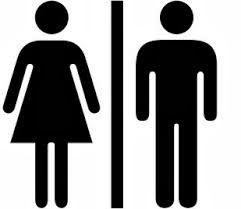
Since the probability of having a girl or a boy is same, half of the families will have a boy first and stop. The other half of the families will have a girl and from half of those families, the second born will be a boy and they will stop while the others will again have a girl. This process will continue.
Suppose the number of couples are N, the number of boys will be N.
1/2 have a boy and stop: 0 girls
1/4 have a girl, then a boy: N/4 girls
1/8 have 2 girls, then a boy: 2*N/8 girls
1/16 have 3 girls, then a boy: 3*N/16 girls
1/32 have 4 girls, then a boy: 4*N/32 girls
…
Total: N boys and
1N 2N 3N 4N
– + – + – + — +… = ~N
Therefore the proportion of boys to girl will be quite close to 1:1.
October Revolution is well know in russian history. Which month do they celebrate it ?
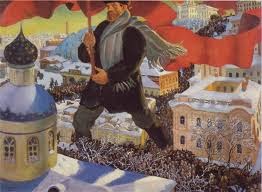
November, Their calandar was 13 days behind ours.